The Sturmhaubitze 42 or "StuH 42" was a self-propelled gun developed in Germany during World War II and based on the StuG III F/8 and later the Ausf G. This was a conversion to the G L/28 howitzer to serve as versatile support vehicle, in service by 1942 (Leningrad) and from 1943 notably at Kursk and Kharkov. In 1942, the StuG III Ausf. F8 received a 10.5 cm (4.1 in) howitzer (Haubitze) and so was redesignated StuH 42 (Sturmhaubitze 42). Under the waffenamt designation system it was called the Sd.Kfz 142/2. from 1212 to 1311 were made depending on sources until production stopped at Alkett in February 1945. They fought in STUG brigades of the eastern front and a few saw action in Italy as well.

StuG-IIIs F8 aty the factory. The chassis were sent for completion at Alkett. This vehicle was originally a demand from the battlefield, as by January 1942 the ealier marks (Ausf) of the STUG with the short barrel 7.5 cm StuK 37 L/24 had been either destroyed or converted as tank hunters. The Army still however needed a support tank, since all the StuG III Ausf. F/8 and Gs were now used purely in anti-tank role. The 10.5 cm leFH 18 howitzer was used as a based at Alkett (Altmärkische Kettenwerk GmbH), to which the conversion project was assigned. In March 1942, Alkett installed a 10.5 cm le.FH 18 (leichte Feldhaubitze) howitzer on a Sturmgeschutz Ausf. F chassis as prototype, and it was tested.
Next, the programme seemed promising and twelve pre-serie vehicle, all based on the Ausf F were ordered, and the same number of le.FH.18n modified at Alkett and to be originally completed from December 1941 to February 1942, with only five guns produced by May 1942. On 2 October 1942 there was an ordnance demonstration before the Furher, with the newly appointed Reich Minister Albert Speer. It was on display at the Neue Reichskanzlei (New Reich Chancellery). Hitler was very impressed with its low profile which was something rare for a self-propelled howitzer, and more saw when it showed its max elevation.
The howitzer had to be shortened, fitted with an optional muzzle brake and modified to be electrically fired and fit in the former Ausf F8 gun cradle. Hitler was informed that six of these were completed, three scheduled for 10 October and last three under four more weeks. On 13 October, ordered that the 12 pre-production Sturmgeschütz once completed (anough to fill an Abteilung) were sent for operational service. But it was quicker. The first nine completed in October 1942 joined the 3.Batterie/Sturmgeschutz-Abteilung 185 and were seen in action south of Leningrad by the end of November 1942.
The other three were delayed until January 1943 and made on a rebuilt Sturmgeschutz Ausf F/8 chassis. By early December 1942, Hitler ordered 24 per month, all to be delivered solely by Alkett in Berlin. The were built on the same assembly line as the Sturmgeschütz III Ausf.G for ease and the latter became the main production type. Production thus moved swiftly in 1942 and early 1943 to the StuG III Ausf. G. The absent muzzle brake was the result of scarcity by 1945 rather than a choice. Alkett produced all of these, 1,299 StuH 42 in all from March 1943 to 1945, to which were added 12 repaired StuG III Ausf. F/F8 in the autumn of 1942 and until January 1943 for a grand total of 1,311 of which only 204 were completed by 30 December 1943. It seems 1945 Ausf Gs received the Saukopf (Topfblende) gun mantlet. Few photos were found showing it actually.
Drawing, without the double-baffle muzzle brake
The Ausf F chassis was unchanged compared to the original, apart the main fighting compartment, with internal changes to the gun cradle, alimentation, ammuntion racks, etc. The roof line was agmented, and the roof ventilator on the Ausf E was lowered to be closer for fumes extraction. The large slab-sides mantlet house the recoil and recuperator cylinders.
It kept its crew of four men, a driver, commander, loader and gunner. The loader had its own roof access with a folding panel and there was another for the loader futher back. The caracteritic cylindrical mushroom used for compartment ventilation was kept unchanged. Like the original it had the caracteristic two rails above the engine deck. The howiter had its recoil system well protected by a flat sides casemate. Of course considerable changes were made when swapping on to the Ausf G.
When the serie swapped in 1944 onto the Ausf G, a circular commander's cupola was added and a sloped armour on the roof to protect it. The left side received a folding back armoir shield with a gun slit, to passed into a standard MG.42 for added firepower. It was manned by the loader, standing through its hatch. Importantly, rails for the Schurzen add-on armour panels were added also to protect the vulnerable sides, notably against bazookas. A full Schürzen kit was composed of either one wedge like forward panel, two rectangular panels (or two composed two-panel pieces) and a sloped downards panel.
They did not protected fully the sides, stopping when the drive sprocket, idler started or down to the roadwheels. It should be added that later Ausf Gs were also finished at the factory with zimerrit for a time. To bolster protection, some received even concrete as extra protection forward. The topfblende late variants had the best protection of all STUH-42s, but they often lacked a muzzle brake and had metal-rimmed return rollers as rubber was in short supply. The shielded MG.34 was also often replaced by a remotelly operated roof-mounted MG.42 in 1945. The main innovation of the STUH 42 was its 10.5 cm StuH 42 howitzer fitted where the former 75 mm Ausf F8 stands. It used the same cradle but was shortened in order to reach a greater elevation, up to +20°. It was -6° in depress and had only a 10° traverse either side. This enabled medium range performances, but with a much heavier and standard shell. Its combat effectiveness against infantry, fortified positions, buildings, walls, and soft skin vehicles was excellent and it could defeat even by concussion lightly protected vehicles. The STUH 42 could also use an AP shell, abeit STUG IIIGs ensured protection of STUH 42 platoons. Only 36 rounds were carried, due to their large size. Performances tables below.
The main innovation of the STUH 42 was its 10.5 cm StuH 42 howitzer fitted where the former 75 mm Ausf F8 stands. It used the same cradle but was shortened in order to reach a greater elevation, up to +20°. It was -6° in depress and had only a 10° traverse either side. This enabled medium range performances, but with a much heavier and standard shell. Its combat effectiveness against infantry, fortified positions, buildings, walls, and soft skin vehicles was excellent and it could defeat even by concussion lightly protected vehicles. The STUH 42 could also use an AP shell, abeit STUG IIIGs ensured protection of STUH 42 platoons. Only 36 rounds were carried, due to their large size. Performances tables below.
The secondary armament was the MG.34 (Rheinmetall Maschinengewehr model 1934) ubiquitous in the Heer and shared by the STUG III. It came with 600 rounds in small magazines and tracers. It was not usable against AA threats however. It was only available externally when using the folding shield of the Ausg G from the loder's hatch as a close-in support weapon. Each of the five crew members had the regular P.38 and there was often a complementary MP.38 and grenades, as seen at Kursk notably, as Russian infantry was able to creep in close for surprise cocktail molotov attacks. There were four mantlet variants, the two weld, slab sides ones, with and without a hole to pass the MG.34 barrel into, and two with Topfblende or late cast mantlet, also with and without hole for a coaxial MG.
As for equipments, the STUH-42 had an intercom for the commander and driver at least, and there were two radio sets used by the loader when not at post. These were a FuG 15 and FuG 16 sets for emission/reception at short range. Each Abteilung depended on an organic core to relay information at longer range. There was indeed no commander variant of the STUH-42. These sets were intended for inter-vehicles communication within the unit.

STUH 42 carrying panzergrenadiere in Russia 1943
The STUH 42 made its combat debut, for the few Ausf F, with the Leningrad Front in late 1942. The STUH 42s were issued to Sturmartillerie Brigades (Abteiling) of Panzer Divisions from spring 1943 all of the type G and a few F/8. Each Sturmartillerie Brigade had a nominal strenght of 45 vehicules and also comprised 33 StuG III/IV tank destroyers to protect the 12 StuH 42 assault howitzers. They were each divided into three batteries (2 StuG IIIs for each in command, two platoons of four StuG IIIs, one platoon of StuH 42. But the reality was that few Heer divisions and perhaps the SS Divisions ever received the full complement.
The bulk of the STUH 42 was used on the eastern front. Although they had a longer range compared to the early STUG-III's 75 short barrel gun, in practice they fired their Sprenggranaten (HE) at best at 5,000 meters and often a more practical range in operations was below 2,000m. In case it had to deal with incoming armour, it was most efficient under 500 m range to do any effect with the AP shell. Since the Sprenggranaten 10.5cm had to be loaded separatel, the rate of fire was at best 5 rounds per minute, most often 2 rpm. With a monthkly delivery of 50 in February 1944 and 100 from August to November 1944, more could be fielded to Sturmartillerie Brigades.
The STUH 42 was a bresh of fresh air for infantry units on the front. They were essential to German tactical doctrine, and were irreplaceable albeit a sub-variant (late) of the Panzer III also feature a howitzer for close support, but it was taller and less well protected. In any case by early 1945, the Heer was no longer at offensive but defensive and depleted Brigades mixed STUG-IIIs and STUH-42 in an impromtu fashion to wage ambushes. But their most famous action in numbers was at Kursk, Operation Zitadelle in July 1943, notably with the Sturmgeschütz-Abteilung 185.
If the STUH 42 soldiered on the eastern front and took part in all major battles were STUG Brigades were deployed (Stalingrad, Kharkov, etc.) on all three front, north to south, such as the Sturmgeschütz-Abteilung 202. They were also deployed in Italy by 1944, soldiering until May 1945 on the Gothic line. They saw action in Hungary as well in 1945, and in the defence of the Seelöwe heights for the very last ones. When used for infantry ambushers, their crews had them hiding in rubble where they low profile made them perfect. The biggest problem however always had been supply, as 36 rounds were quickly spent. The supply train was usually procured by half-tracks but they were few and far in between in 1944-45. The STUH-42s had engine deck barriers used to pack a lot of hardware, from the crew's tent to perosnal haversacks and other items, water and fuel jerrycans, ammunition cradles or even full fuel tanks, in addition to the usual set of tools shared with the STUG-III and spare roadwheels, and extra protection provided by spare track links.
panzergruppe.itgo.com
wwiitanks.co.uk
historyofwar.org
wardrawings.be
forum.axishistory.com
Sturmgeschütz III and Sturmhaubitze 42 D Doyle Books
On tank hunter
panzerserra.blogspot.com
worldwarphotos.info
wehrmacht-history.com
en.wikipedia.org
ww2-history.fandom.com
commons.wikimedia.org
/armorama.com
Development of the STUH 42

StuG-IIIs F8 aty the factory. The chassis were sent for completion at Alkett. This vehicle was originally a demand from the battlefield, as by January 1942 the ealier marks (Ausf) of the STUG with the short barrel 7.5 cm StuK 37 L/24 had been either destroyed or converted as tank hunters. The Army still however needed a support tank, since all the StuG III Ausf. F/8 and Gs were now used purely in anti-tank role. The 10.5 cm leFH 18 howitzer was used as a based at Alkett (Altmärkische Kettenwerk GmbH), to which the conversion project was assigned. In March 1942, Alkett installed a 10.5 cm le.FH 18 (leichte Feldhaubitze) howitzer on a Sturmgeschutz Ausf. F chassis as prototype, and it was tested.
Next, the programme seemed promising and twelve pre-serie vehicle, all based on the Ausf F were ordered, and the same number of le.FH.18n modified at Alkett and to be originally completed from December 1941 to February 1942, with only five guns produced by May 1942. On 2 October 1942 there was an ordnance demonstration before the Furher, with the newly appointed Reich Minister Albert Speer. It was on display at the Neue Reichskanzlei (New Reich Chancellery). Hitler was very impressed with its low profile which was something rare for a self-propelled howitzer, and more saw when it showed its max elevation.
The howitzer had to be shortened, fitted with an optional muzzle brake and modified to be electrically fired and fit in the former Ausf F8 gun cradle. Hitler was informed that six of these were completed, three scheduled for 10 October and last three under four more weeks. On 13 October, ordered that the 12 pre-production Sturmgeschütz once completed (anough to fill an Abteilung) were sent for operational service. But it was quicker. The first nine completed in October 1942 joined the 3.Batterie/Sturmgeschutz-Abteilung 185 and were seen in action south of Leningrad by the end of November 1942.
The other three were delayed until January 1943 and made on a rebuilt Sturmgeschutz Ausf F/8 chassis. By early December 1942, Hitler ordered 24 per month, all to be delivered solely by Alkett in Berlin. The were built on the same assembly line as the Sturmgeschütz III Ausf.G for ease and the latter became the main production type. Production thus moved swiftly in 1942 and early 1943 to the StuG III Ausf. G. The absent muzzle brake was the result of scarcity by 1945 rather than a choice. Alkett produced all of these, 1,299 StuH 42 in all from March 1943 to 1945, to which were added 12 repaired StuG III Ausf. F/F8 in the autumn of 1942 and until January 1943 for a grand total of 1,311 of which only 204 were completed by 30 December 1943. It seems 1945 Ausf Gs received the Saukopf (Topfblende) gun mantlet. Few photos were found showing it actually.
Design of the Sturmhabitze 42

Drawing, without the double-baffle muzzle brake
The Ausf F chassis was unchanged compared to the original, apart the main fighting compartment, with internal changes to the gun cradle, alimentation, ammuntion racks, etc. The roof line was agmented, and the roof ventilator on the Ausf E was lowered to be closer for fumes extraction. The large slab-sides mantlet house the recoil and recuperator cylinders.
It kept its crew of four men, a driver, commander, loader and gunner. The loader had its own roof access with a folding panel and there was another for the loader futher back. The caracteritic cylindrical mushroom used for compartment ventilation was kept unchanged. Like the original it had the caracteristic two rails above the engine deck. The howiter had its recoil system well protected by a flat sides casemate. Of course considerable changes were made when swapping on to the Ausf G.
Protection
It was basically the same as the original STUG III F8, 50 mm on all frontal parts, with several weakspots on the sides, rear, of 11 mm thickness, and a weaker engine deck and belly. On the Ausf G with add-on panels it reached 80 mm (3.5 inches) on the forward arc, down to 30 mm on other parts. The hull nose two part beak was 80 mm for the sloped upper and lower plates, 30 mm for the flat upper plate connecting to the casemate. 80 mm for the casemate lower front plates either side of the mantlet opening (with add-on bolted pieces), 30 mm on the two almost flat upper plates down to the roof. The mantlet which had inverted downards sides was protected for its front part by the same add-on 50 mm bolted plate to reach also 80 mm on the original 30 mm plating. The casemate offered both a low profile and excellent protection, all the advantages of the STUG III (most produced tracked armoured fighting vehicle in the German inventory).When the serie swapped in 1944 onto the Ausf G, a circular commander's cupola was added and a sloped armour on the roof to protect it. The left side received a folding back armoir shield with a gun slit, to passed into a standard MG.42 for added firepower. It was manned by the loader, standing through its hatch. Importantly, rails for the Schurzen add-on armour panels were added also to protect the vulnerable sides, notably against bazookas. A full Schürzen kit was composed of either one wedge like forward panel, two rectangular panels (or two composed two-panel pieces) and a sloped downards panel.
They did not protected fully the sides, stopping when the drive sprocket, idler started or down to the roadwheels. It should be added that later Ausf Gs were also finished at the factory with zimerrit for a time. To bolster protection, some received even concrete as extra protection forward. The topfblende late variants had the best protection of all STUH-42s, but they often lacked a muzzle brake and had metal-rimmed return rollers as rubber was in short supply. The shielded MG.34 was also often replaced by a remotelly operated roof-mounted MG.42 in 1945.
Power and performances
The STUH-42 had a Maybach HL 120 TR engine, inherited from the Ausf F chassis. It was a 12 cylinder liquid cooled Vee, petrol engine, rated for 300 hp at 3,000 rpm. It was coupled with a six speed forward, 1 speed reverse transmission system. It was capable of moving it up to 40 km/h cross country for a range of 155 km. Depite the heavier howitzer, performances were not that degraded much since total weight was around 21,780 kg. With its barrel, it was 6.1 meters long but the overhang was short compared to tank hunters, making it less likely to catch obstacles. Importantly, the StuH 42 kept excellent torsion bar suspension as the original single pin tracks, six doubled standard roadhweels, ruberrized, three return rollers, front drive sprocket and rear idlers, stock STUG III Ausf F7 again. Overall, like the corresponding StuG it had good reliability and was well liked by its crews.Armament
 The main innovation of the STUH 42 was its 10.5 cm StuH 42 howitzer fitted where the former 75 mm Ausf F8 stands. It used the same cradle but was shortened in order to reach a greater elevation, up to +20°. It was -6° in depress and had only a 10° traverse either side. This enabled medium range performances, but with a much heavier and standard shell. Its combat effectiveness against infantry, fortified positions, buildings, walls, and soft skin vehicles was excellent and it could defeat even by concussion lightly protected vehicles. The STUH 42 could also use an AP shell, abeit STUG IIIGs ensured protection of STUH 42 platoons. Only 36 rounds were carried, due to their large size. Performances tables below.
The main innovation of the STUH 42 was its 10.5 cm StuH 42 howitzer fitted where the former 75 mm Ausf F8 stands. It used the same cradle but was shortened in order to reach a greater elevation, up to +20°. It was -6° in depress and had only a 10° traverse either side. This enabled medium range performances, but with a much heavier and standard shell. Its combat effectiveness against infantry, fortified positions, buildings, walls, and soft skin vehicles was excellent and it could defeat even by concussion lightly protected vehicles. The STUH 42 could also use an AP shell, abeit STUG IIIGs ensured protection of STUH 42 platoons. Only 36 rounds were carried, due to their large size. Performances tables below.
The secondary armament was the MG.34 (Rheinmetall Maschinengewehr model 1934) ubiquitous in the Heer and shared by the STUG III. It came with 600 rounds in small magazines and tracers. It was not usable against AA threats however. It was only available externally when using the folding shield of the Ausg G from the loder's hatch as a close-in support weapon. Each of the five crew members had the regular P.38 and there was often a complementary MP.38 and grenades, as seen at Kursk notably, as Russian infantry was able to creep in close for surprise cocktail molotov attacks. There were four mantlet variants, the two weld, slab sides ones, with and without a hole to pass the MG.34 barrel into, and two with Topfblende or late cast mantlet, also with and without hole for a coaxial MG.
As for equipments, the STUH-42 had an intercom for the commander and driver at least, and there were two radio sets used by the loader when not at post. These were a FuG 15 and FuG 16 sets for emission/reception at short range. Each Abteilung depended on an organic core to relay information at longer range. There was indeed no commander variant of the STUH-42. These sets were intended for inter-vehicles communication within the unit.
(AP Armor Piercing) |
105mm 14Kg 470M/Sec | ||||||||
|---|---|---|---|---|---|---|---|---|---|
| Quoted Penetration 59mm@500m | |||||||||
| Range(Mtr) | 100 | 200 | 400 | 800 | 1200 | 1600 | 2000 | 2400 | |
| Flight Time(Secs) | 0.21 | 0.43 | 0.88 | 1.84 | 2.88 | 4.02 | 5.26 | 6.62 | |
| Penetration(mm@30°) | 80 | 75 | 68 | 61 | 54 | 47 | 41 | 36 | |
| Penetration(mm@0°) | 93 | 87 | 79 | 71 | 63 | 55 | 48 | 42 | |
| Hit Probability(%) | 98 | 98 | 98 | 74 | 34 | 15 | 6 | 3 | |
FH Gr 38, High Explosive |
105mm 14.8Kg 470M/Sec | 1.380Kg explosive | |||||||
| Range(Mtr) | 500 | 1000 | 1500 | 2000 | 2500 | 3000 | 3500 | 4000 | |
| Flight Time(Secs) | 1.12 | 2.35 | 3.72 | 5.26 | 6.98 | 8.94 | 11.17 | 13.75 | |
| Direct Fire | |||||||||
| Range(Mtr) | 100 | 200 | 400 | 800 | 1200 | 1600 | 2000 | 2400 | |
| Flight Time(Secs) | 0.21 | 0.43 | 0.88 | 1.84 | 2.88 | 4.02 | 5.26 | 6.62 | |
| Hit Probability(%) | 98 | 98 | 98 | 74 | 34 | 15 | 6 | 3 | |
Sturmhaubitze 42 specifications | |
| Dimensions | 6.1 meters, as STUG-III F/G |
| Total weight, battle ready | 21.78 tons |
| Crew | 4 |
| Propulsion | Maybach HL 120 TR gas. 300 bhp, 6+1 gbx |
| Suspension | Leaf springs, 6x2 rdwls either side |
| Maximum speed | 40 kph |
| Range | 155 km |
| Armament | 105 mm L/28 howitzer, MG.34 LMG |
| Armor | As the STUG III ausf F/G |
| Total production | 1,212 to 1,311 |
Combat Deployment of the Sturmhaubitze 42

STUH 42 carrying panzergrenadiere in Russia 1943
The STUH 42 made its combat debut, for the few Ausf F, with the Leningrad Front in late 1942. The STUH 42s were issued to Sturmartillerie Brigades (Abteiling) of Panzer Divisions from spring 1943 all of the type G and a few F/8. Each Sturmartillerie Brigade had a nominal strenght of 45 vehicules and also comprised 33 StuG III/IV tank destroyers to protect the 12 StuH 42 assault howitzers. They were each divided into three batteries (2 StuG IIIs for each in command, two platoons of four StuG IIIs, one platoon of StuH 42. But the reality was that few Heer divisions and perhaps the SS Divisions ever received the full complement.
The bulk of the STUH 42 was used on the eastern front. Although they had a longer range compared to the early STUG-III's 75 short barrel gun, in practice they fired their Sprenggranaten (HE) at best at 5,000 meters and often a more practical range in operations was below 2,000m. In case it had to deal with incoming armour, it was most efficient under 500 m range to do any effect with the AP shell. Since the Sprenggranaten 10.5cm had to be loaded separatel, the rate of fire was at best 5 rounds per minute, most often 2 rpm. With a monthkly delivery of 50 in February 1944 and 100 from August to November 1944, more could be fielded to Sturmartillerie Brigades.
The STUH 42 was a bresh of fresh air for infantry units on the front. They were essential to German tactical doctrine, and were irreplaceable albeit a sub-variant (late) of the Panzer III also feature a howitzer for close support, but it was taller and less well protected. In any case by early 1945, the Heer was no longer at offensive but defensive and depleted Brigades mixed STUG-IIIs and STUH-42 in an impromtu fashion to wage ambushes. But their most famous action in numbers was at Kursk, Operation Zitadelle in July 1943, notably with the Sturmgeschütz-Abteilung 185.
If the STUH 42 soldiered on the eastern front and took part in all major battles were STUG Brigades were deployed (Stalingrad, Kharkov, etc.) on all three front, north to south, such as the Sturmgeschütz-Abteilung 202. They were also deployed in Italy by 1944, soldiering until May 1945 on the Gothic line. They saw action in Hungary as well in 1945, and in the defence of the Seelöwe heights for the very last ones. When used for infantry ambushers, their crews had them hiding in rubble where they low profile made them perfect. The biggest problem however always had been supply, as 36 rounds were quickly spent. The supply train was usually procured by half-tracks but they were few and far in between in 1944-45. The STUH-42s had engine deck barriers used to pack a lot of hardware, from the crew's tent to perosnal haversacks and other items, water and fuel jerrycans, ammunition cradles or even full fuel tanks, in addition to the usual set of tools shared with the STUG-III and spare roadwheels, and extra protection provided by spare track links.
Links on the Sturmhaubitze 42
weaponsystems.netpanzergruppe.itgo.com
wwiitanks.co.uk
historyofwar.org
wardrawings.be
forum.axishistory.com
Sturmgeschütz III and Sturmhaubitze 42 D Doyle Books
On tank hunter
panzerserra.blogspot.com
worldwarphotos.info
wehrmacht-history.com
en.wikipedia.org
ww2-history.fandom.com
commons.wikimedia.org
/armorama.com
Gallery on the Sturmhaubitze 42

Preserie Ausf F in Russia, November 1942

STUH-42 Ausf F 3.Batterie/Sturmgeschutz-Abteilung 185 Leningrad, winter 1942-43
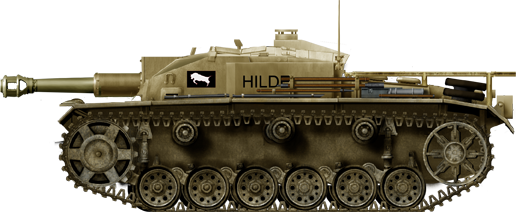
STUH 42 Ausf F "hilde", Stug Brigade 185, early 1943
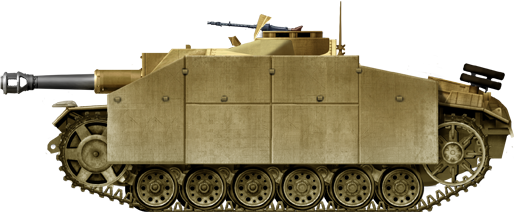
Ausf G Early prod. Stug Abt.912 Jüterborg May 1943
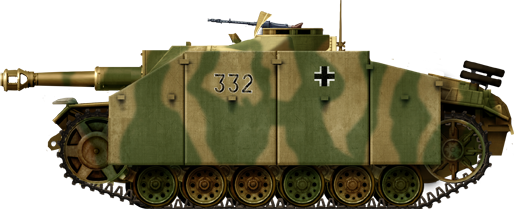
Ausf G Early prod. Stug Abt.245 Est Ft. Summer 1943

Same, other livery

StuH 42 of the early Ausf.G type, with spaced armor, Russia 1944.
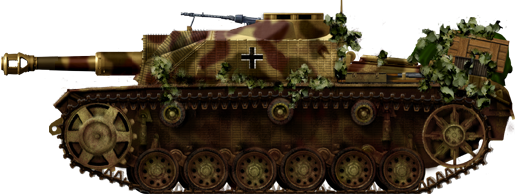
Late StuH 42 G without the muzzle brake, one of the few produced in early 1945, Netherlands December 1944
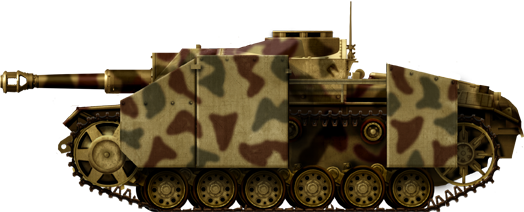
The same with schurzen on

Ausf.G, Flasshchirmjäger Division Hermann Goering, Italy, mid-1944.
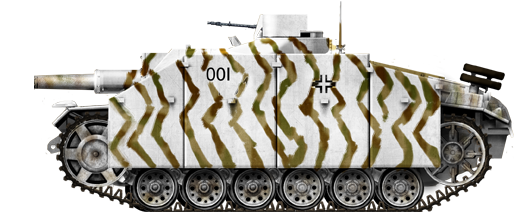
Late Ausf G February 1945

Ausf G late type, ambush camouflage April-May 1945
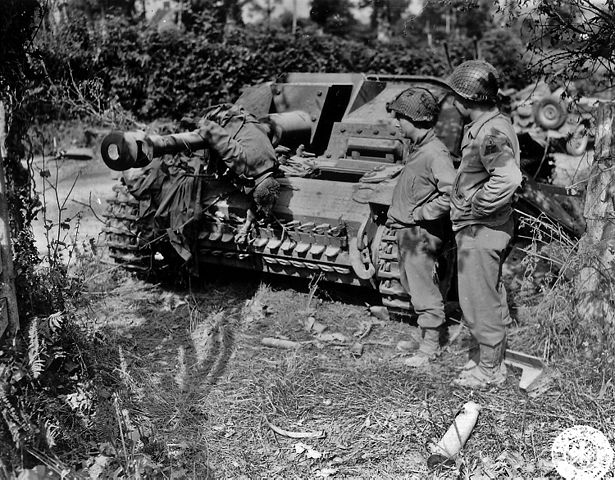
Knocked out STUH 42
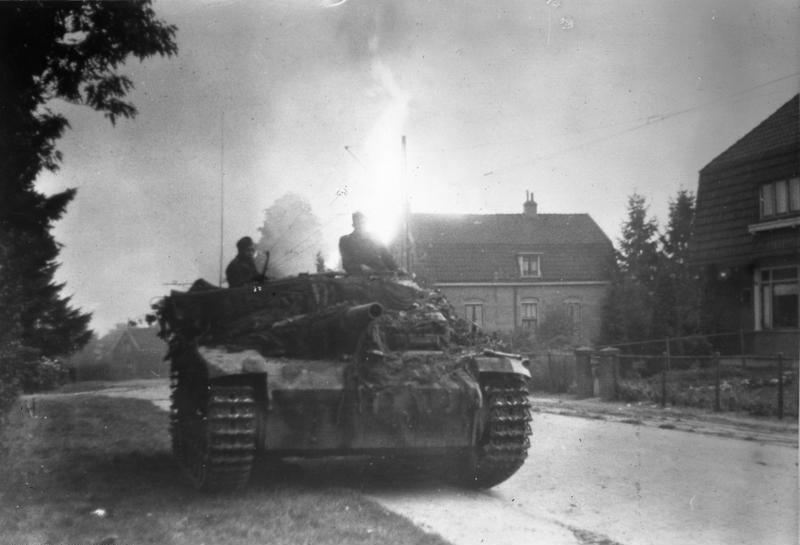
STUH 42 at Arnheim, main street

STUH 42 loading ammunition
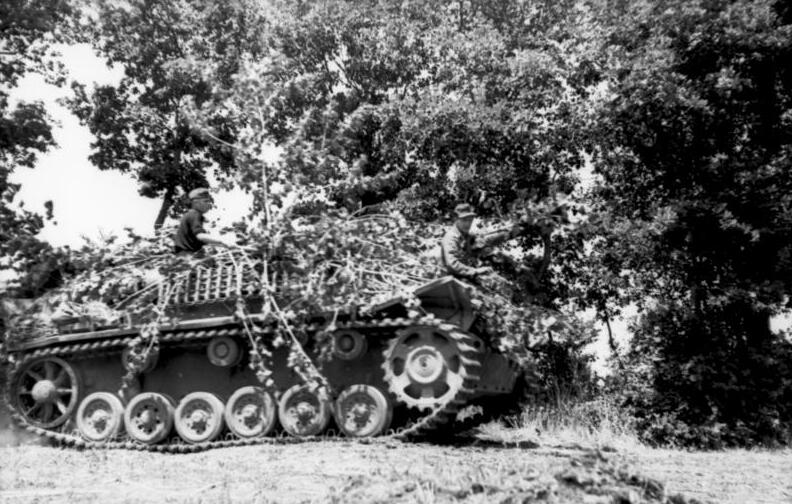
STUH 42 Italy
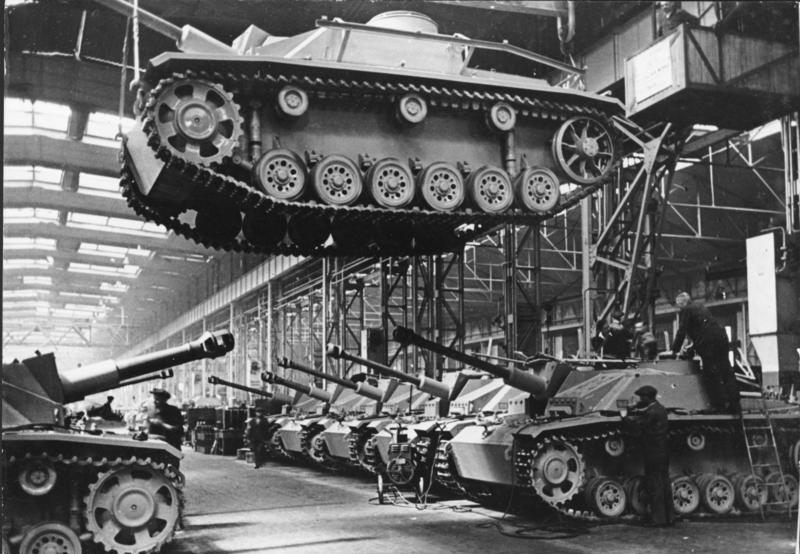
STUG-III Ausf F and STUG-42 on the left
Video
Nice overview with the master, Hilary Doyle in person (Sofilein channel)
WW2 Tanks




























WW2 tanks posters

All Tiger tanks liveries.

Panther liveries and variants

WW2 Armour - All tanks











Tanks aces and single tanks series

Find more there

Museums, Movies, Books & Games
The Tanks and Armor in pop culture
Tanks and armored vehicles in general are only really grasped when seen first person: The mass, the scale, it's all there. Explore also the way tanks were covered in the movie industry, in books and in video games.Movies:
Best tanks movie on warhistoryonline.com
On imdb.com
On bestsimilar.com/
miltours.com
liveabout.com/
watchmojo.com
Video Games:
pcgamesn.com
historyhit.com
levvvel.com
vg247.com/best-tank-games
mmobomb.com/
alienwarearena.com

